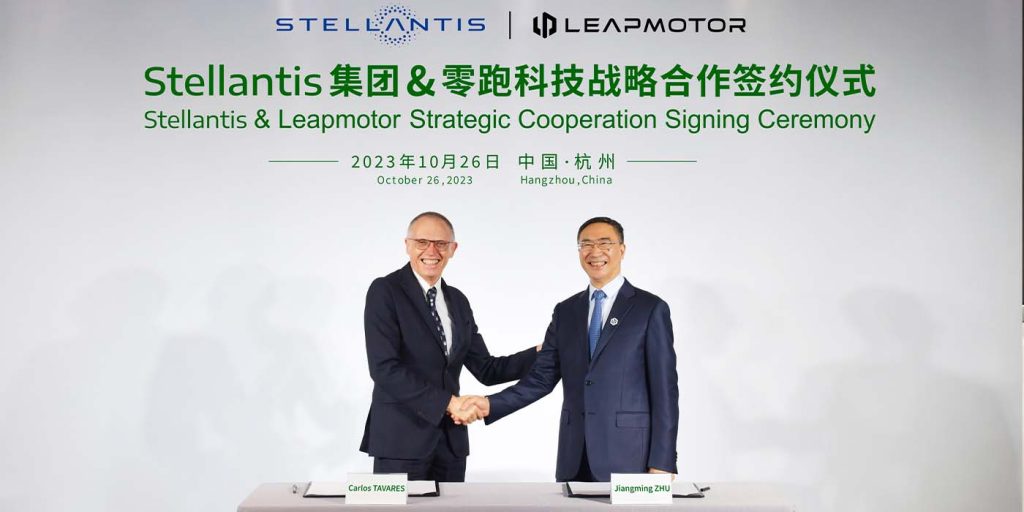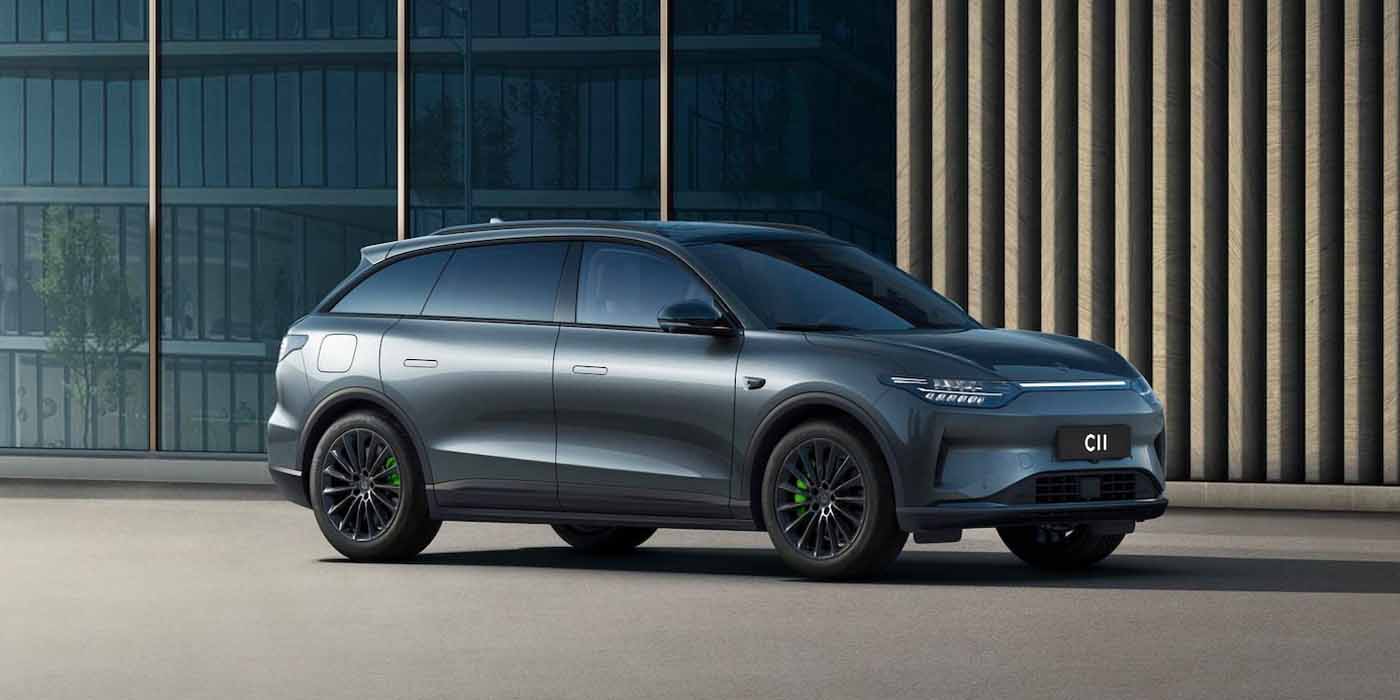Stellantis mulls building Chinese EVs in Italy for JV with Leapmotor
Four months after announcing a joint venture with Chinese EV automaker Leapmotor, Stellantis is reportedly mulling taking the strategic cooperation further by building hundreds of thousands of BEVs for its new partner in Italy to serve the European market.
Stellantis once operated a Jeep joint venture in China with GAC Group that it inherited from Fiat Chrysler Automobiles (FCA) before its merger with Peugeot S.A. in early 2021. However, by October 2022, Stellantis announced it was terminating the JV with GAC, citing dwindling sales and, according to CEO Carlos Tavares, a “broken trust” with one of the top five automakers in China.
GAC clapped back, citing a “lack of respect” from the Stellantis chief, setting the stage for a bankruptcy filing, thus solidifying its expiry. This left Stellantis with a minor foothold in China but the freedom to court new partners in the Chinese EV market. Enter Leapmotor.
The two OEMs signed a joint venture in October 2023 in which Stellantis took a $1.6 billion stake (21%) in the Leapmotor, securing exclusive rights to the manufacturing, sale, and export of Leapmotor EVs everywhere outside of the Chinese market.
Additionally, Stellantis gained access to its foreign partner’s existing EV ecosystem to support its own global electrification goals – part of its Dare Forward 2030 strategy. Most recently, Stellantis looks to capitalize on the growing popularity of affordable Chinese EVs coming to Europe and may help Leapmotor build the cars locally.

Stellantis could build up to 150k Chinese EVs per year
Late last week, Italian media quoted Stellantis CEO Carlos Tavares divulging that the company may build Chinese EVs in Europe for Leapmotor as long as there is a good business case to support the strategy.
Tavares specifically mentioned Stellantis’ Mirafiori plant in Turin, Italy, as the potential home to Chinese EV builds for Leapmotor. Stellantis’ local dealers in the European market would then sell those BEVs.
A spokesperson for Stellantis confirmed Tavares’ comments but declined to speak further. However, a source with direct knowledge of the situation told Automotive News Europe that Stellantis is mulling an annual output of 150,000 BEVs in Italy for Leapmotor. Other sources shared that Stellantis’ production of Chinese EVs in Turin could begin as early as 2026 or 2027.
The Mirafiori plant is currently home to Fiat 500e production and Maserati vehicles. Stellantis has recently traded blows with the Italian Government for its lack of financial support to bolster EV production in the country. This led to the government considering buying a stake in Stellantis to show its support.
Last week, the Stellantis announced it had turned a profit on building EVs and, with its joint venture with its Chinese counterpart, could lean further into that segment to capitalize on additional sales.
FTC: We use income earning auto affiliate links. More.

Four months after announcing a joint venture with Chinese EV automaker Leapmotor, Stellantis is reportedly mulling taking the strategic cooperation further by building hundreds of thousands of BEVs for its new partner in Italy to serve the European market.
Stellantis once operated a Jeep joint venture in China with GAC Group that it inherited from Fiat Chrysler Automobiles (FCA) before its merger with Peugeot S.A. in early 2021. However, by October 2022, Stellantis announced it was terminating the JV with GAC, citing dwindling sales and, according to CEO Carlos Tavares, a “broken trust” with one of the top five automakers in China.
GAC clapped back, citing a “lack of respect” from the Stellantis chief, setting the stage for a bankruptcy filing, thus solidifying its expiry. This left Stellantis with a minor foothold in China but the freedom to court new partners in the Chinese EV market. Enter Leapmotor.
The two OEMs signed a joint venture in October 2023 in which Stellantis took a $1.6 billion stake (21%) in the Leapmotor, securing exclusive rights to the manufacturing, sale, and export of Leapmotor EVs everywhere outside of the Chinese market.
Additionally, Stellantis gained access to its foreign partner’s existing EV ecosystem to support its own global electrification goals – part of its Dare Forward 2030 strategy. Most recently, Stellantis looks to capitalize on the growing popularity of affordable Chinese EVs coming to Europe and may help Leapmotor build the cars locally.

Stellantis could build up to 150k Chinese EVs per year
Late last week, Italian media quoted Stellantis CEO Carlos Tavares divulging that the company may build Chinese EVs in Europe for Leapmotor as long as there is a good business case to support the strategy.
Tavares specifically mentioned Stellantis’ Mirafiori plant in Turin, Italy, as the potential home to Chinese EV builds for Leapmotor. Stellantis’ local dealers in the European market would then sell those BEVs.
A spokesperson for Stellantis confirmed Tavares’ comments but declined to speak further. However, a source with direct knowledge of the situation told Automotive News Europe that Stellantis is mulling an annual output of 150,000 BEVs in Italy for Leapmotor. Other sources shared that Stellantis’ production of Chinese EVs in Turin could begin as early as 2026 or 2027.
The Mirafiori plant is currently home to Fiat 500e production and Maserati vehicles. Stellantis has recently traded blows with the Italian Government for its lack of financial support to bolster EV production in the country. This led to the government considering buying a stake in Stellantis to show its support.
Last week, the Stellantis announced it had turned a profit on building EVs and, with its joint venture with its Chinese counterpart, could lean further into that segment to capitalize on additional sales.
FTC: We use income earning auto affiliate links. More.
